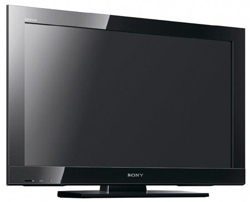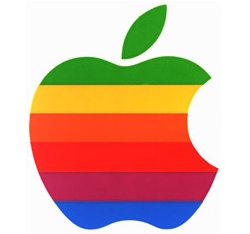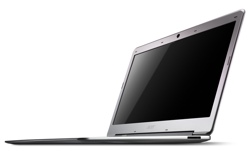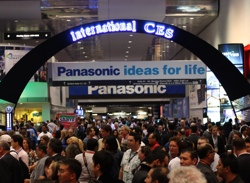
CES 2012 has come and gone, and it’s time for the inevitable summary and think pieces on the directions the industry is heading, the highlights of the show, and so on. We’ll also be posting some interviews and highlights from our live coverage this week, but before that it is, of course, necessary to publish some sort of top 10 list.
So here are five winners and five losers of CES, as judged by those of us who went to the show, and with consideration both for the limited, short-term nature of the show itself and the longer-term sea of trends on which these companies and devices are sailing.
Winners
TVs
 Last year, the TVs at CES were a wearying collection of the same-y junk, and everyone was pushing the same thing: 3D. I don’t personally have a problem with 3D, and in fact almost every TV we saw this year was also 3D-capable. But this time around, it wasn’t their primary feature. Perhaps as a result of the various display manufacturers’ lineups looking more or less the same for a while (not to mention the indifferent response of the market to home 3D), TV makers decided to actually add different features this year. Not all were useful, mind you, but Samsung, Sony, Sharp, and so on decided to take their own paths – whether in style of interaction, breadth of content, or sheer size (that would be Sharp). It’s good to see a TV here and actually be curious about it again.
Last year, the TVs at CES were a wearying collection of the same-y junk, and everyone was pushing the same thing: 3D. I don’t personally have a problem with 3D, and in fact almost every TV we saw this year was also 3D-capable. But this time around, it wasn’t their primary feature. Perhaps as a result of the various display manufacturers’ lineups looking more or less the same for a while (not to mention the indifferent response of the market to home 3D), TV makers decided to actually add different features this year. Not all were useful, mind you, but Samsung, Sony, Sharp, and so on decided to take their own paths – whether in style of interaction, breadth of content, or sheer size (that would be Sharp). It’s good to see a TV here and actually be curious about it again.
Sony
 While Sony stumbles here and there, especially with PR, they do make some really cool stuff. This year’s trip to their booth reminded us just how much stuff this company makes, and how much of it is actually pretty great. Sure, 1080p 3D binoculars aren’t the most practical thing in the world, but I like to know someone’s making them, and making them well. The Sony-Ericsson phones were also quite nice; the new Xperia Ion and S both impressed. One caveat there: they’ve been hyping their S and P tablets for so long that the devices are in danger of being old before any consumers really get a chance to use them. They have good products, but need to just trust the brand and the quality and ship the damn things.
While Sony stumbles here and there, especially with PR, they do make some really cool stuff. This year’s trip to their booth reminded us just how much stuff this company makes, and how much of it is actually pretty great. Sure, 1080p 3D binoculars aren’t the most practical thing in the world, but I like to know someone’s making them, and making them well. The Sony-Ericsson phones were also quite nice; the new Xperia Ion and S both impressed. One caveat there: they’ve been hyping their S and P tablets for so long that the devices are in danger of being old before any consumers really get a chance to use them. They have good products, but need to just trust the brand and the quality and ship the damn things.
Streaming and media services
 There was a recurring theme of empowering consumers, by which many companies mean they’ll stop shoving their inferior in-house services down our throats, and let us do what they want with the device we paid for. This means that more and more devices are letting in services like Pandora, Skype, Amazon streaming, everything. If you provide a way to connect consumers with content, device makers want you to be available on their thing. As devices get smarter, it’s getting harder to defend how dumb the big brands have forced them to be over the last few years. There’s no excuse for a device powerful enough to run Netflix (to say nothing of 3D games) not to do so. TV makers are accepting this. That’s a win.
There was a recurring theme of empowering consumers, by which many companies mean they’ll stop shoving their inferior in-house services down our throats, and let us do what they want with the device we paid for. This means that more and more devices are letting in services like Pandora, Skype, Amazon streaming, everything. If you provide a way to connect consumers with content, device makers want you to be available on their thing. As devices get smarter, it’s getting harder to defend how dumb the big brands have forced them to be over the last few years. There’s no excuse for a device powerful enough to run Netflix (to say nothing of 3D games) not to do so. TV makers are accepting this. That’s a win.
ARM & friends
 While Intel has been dominating the desktop world, ARM has crept up and stolen pretty much the entire mobile and embedded market. There doesn’t seem to be any abatement in that trend, and in fact Intel’s hold on Windows machines is starting to show cracks as well. This year at CES, all the smart TVs, tablets, phones, tweener devices, and half the other stuff worth looking at were sporting an ARM processor in one form or another. NVIDIA showed a great, cheap Android 4.0 tablet, Qualcomm had a ton of TVs and powerful media devices, Marvell showed their great OLPC XO-3 tablet and powers a bunch of other things — the list goes on. ARM was probably the most ubiquitous company at the show. Intel did show off their new smartphone, though, so a new battle may be forthcoming.
While Intel has been dominating the desktop world, ARM has crept up and stolen pretty much the entire mobile and embedded market. There doesn’t seem to be any abatement in that trend, and in fact Intel’s hold on Windows machines is starting to show cracks as well. This year at CES, all the smart TVs, tablets, phones, tweener devices, and half the other stuff worth looking at were sporting an ARM processor in one form or another. NVIDIA showed a great, cheap Android 4.0 tablet, Qualcomm had a ton of TVs and powerful media devices, Marvell showed their great OLPC XO-3 tablet and powers a bunch of other things — the list goes on. ARM was probably the most ubiquitous company at the show. Intel did show off their new smartphone, though, so a new battle may be forthcoming.
RIM
 I must admit I wasn’t expecting much from RIM, and I guess in the end they didn’t have that much to offer: a hands-on with the PlayBook 2.0 update. But I’m really glad we stopped by, and I think RIM showed that they are still a force to be reckoned with in some respects. The PlayBook, whipping boy of the tech blogs, is made far more complete by the addition of the email, contacts, and calendar features. If they had released this, and perhaps at a slightly lower price than they were selling it for at launch, I think the tech world would have been genuinely enthusiastic. In our interview with them, I wasn’t just buttering them up when I said I would certainly recommend the PlayBook over an iOS or Android device for the purposes of day-to-day productivity, enterprise, and so on. The PlayBook, I said, was a breach birth, its non-critical consumer-facing functions emerging foremost, and its essential business and productivity functions delayed dangerously. Now that they’ve been delivered (so to speak), I can safely say the PlayBook is a far better tablet than it was, and that Google and Apple should take a look at some of their clever and powerful gesture and UI work.
I must admit I wasn’t expecting much from RIM, and I guess in the end they didn’t have that much to offer: a hands-on with the PlayBook 2.0 update. But I’m really glad we stopped by, and I think RIM showed that they are still a force to be reckoned with in some respects. The PlayBook, whipping boy of the tech blogs, is made far more complete by the addition of the email, contacts, and calendar features. If they had released this, and perhaps at a slightly lower price than they were selling it for at launch, I think the tech world would have been genuinely enthusiastic. In our interview with them, I wasn’t just buttering them up when I said I would certainly recommend the PlayBook over an iOS or Android device for the purposes of day-to-day productivity, enterprise, and so on. The PlayBook, I said, was a breach birth, its non-critical consumer-facing functions emerging foremost, and its essential business and productivity functions delayed dangerously. Now that they’ve been delivered (so to speak), I can safely say the PlayBook is a far better tablet than it was, and that Google and Apple should take a look at some of their clever and powerful gesture and UI work.
Losers
Apple
 People have been saying that the shadow of Apple would fall darkly on CES, that everyone would be spooked about the imminent presence of the new iPad and the rumored iTV, that it would be a show of Apple clones. The truth is that no one really seemed to be thinking much about Apple one way or the other. We saw phones taking design in interesting directions, tablets with diverse uses, business models that move beyond iTunes, and smart TVs that the companies seemed pretty excited about, not defeatist or pathetic. The only place Apple showed up was in the accessories area, and the new items we saw, more often than not, were careful to accommodate Android and other devices as well. CES just isn’t Apple’s show, which isn’t much of a surprise to some, but others want to believe that Apple has a presence even where it isn’t. CES showed this year that, news coverage patterns notwithstanding, the tech world doesn’t revolve around Apple; it revolves around a weird and splendid panoply of overly specific gadgets, raw components, and foreign niche markets.
People have been saying that the shadow of Apple would fall darkly on CES, that everyone would be spooked about the imminent presence of the new iPad and the rumored iTV, that it would be a show of Apple clones. The truth is that no one really seemed to be thinking much about Apple one way or the other. We saw phones taking design in interesting directions, tablets with diverse uses, business models that move beyond iTunes, and smart TVs that the companies seemed pretty excited about, not defeatist or pathetic. The only place Apple showed up was in the accessories area, and the new items we saw, more often than not, were careful to accommodate Android and other devices as well. CES just isn’t Apple’s show, which isn’t much of a surprise to some, but others want to believe that Apple has a presence even where it isn’t. CES showed this year that, news coverage patterns notwithstanding, the tech world doesn’t revolve around Apple; it revolves around a weird and splendid panoply of overly specific gadgets, raw components, and foreign niche markets.
Consumers
 Despite all the wins listed, it still wasn’t a very good show for consumers. Many device classes have been caught mid-transition: tablets and phones, only a few of which are running that all-important Ice Cream Sandwich; TVs, which are beginning the transition to smart TVs but aren’t safe enough yet to put in the hands of non-enthusiasts; car interfaces, which have not learned lessons from smartphones and tablets and are still fairly unintuitive — etc, etc. The trends are good, but you can’t buy trends. Whether it will be next year or the year after that the devices achieve the status of buyable I can’t say, but I do know that I wouldn’t recommend many things I saw this year, even if I found them promising.
Despite all the wins listed, it still wasn’t a very good show for consumers. Many device classes have been caught mid-transition: tablets and phones, only a few of which are running that all-important Ice Cream Sandwich; TVs, which are beginning the transition to smart TVs but aren’t safe enough yet to put in the hands of non-enthusiasts; car interfaces, which have not learned lessons from smartphones and tablets and are still fairly unintuitive — etc, etc. The trends are good, but you can’t buy trends. Whether it will be next year or the year after that the devices achieve the status of buyable I can’t say, but I do know that I wouldn’t recommend many things I saw this year, even if I found them promising.
Ultrabooks
 The much-hyped ultrabooks were mostly snoozers: the same devices people have been making for years, but thinner. Not that there’s anything wrong with that, exactly, but it sure isn’t very exciting — it’s more like what TV makers do. And brands like Toshiba and Lenovo can’t afford to be considered as providing a commodity after this class of products has been hyped to the moon. The devices I saw weren’t bad, just not very impressive from the standpoint of a consumer standing in a Best Buy or browsing the web trying to decide what to get. I didn’t get a chance to check out Dell’s new machine, though, which Matt Burns tells me is a very nice piece of kit. And these are only the first ultrabooks, so we must give them a chance to refine themselves. It just wasn’t much of a debut.
The much-hyped ultrabooks were mostly snoozers: the same devices people have been making for years, but thinner. Not that there’s anything wrong with that, exactly, but it sure isn’t very exciting — it’s more like what TV makers do. And brands like Toshiba and Lenovo can’t afford to be considered as providing a commodity after this class of products has been hyped to the moon. The devices I saw weren’t bad, just not very impressive from the standpoint of a consumer standing in a Best Buy or browsing the web trying to decide what to get. I didn’t get a chance to check out Dell’s new machine, though, which Matt Burns tells me is a very nice piece of kit. And these are only the first ultrabooks, so we must give them a chance to refine themselves. It just wasn’t much of a debut.
Set-top boxes
 There’s been an explosion of diversity in the set-top box space, with devices like the Boxee Box and Roku, and of course Tivo and the like. But the new smart TVs being put out by practically every TV maker take dead aim at these convenient, user-friendly products. It was a bottom-up revolution over the last two years as these nimble and inexpensive boxes took the sloppily-produced “smart” TVs of the day to school with faster updates, more content, and easy entry. Those salad days may be ending; Samsung, LG, and others are putting real money and real R&D into making set-top boxes obsolete. I’d hate to be Roku right now — well, that’s not true, they’re doing great. But over the next year they will really have to step up their game and prevent their service from being duplicated on-device.
There’s been an explosion of diversity in the set-top box space, with devices like the Boxee Box and Roku, and of course Tivo and the like. But the new smart TVs being put out by practically every TV maker take dead aim at these convenient, user-friendly products. It was a bottom-up revolution over the last two years as these nimble and inexpensive boxes took the sloppily-produced “smart” TVs of the day to school with faster updates, more content, and easy entry. Those salad days may be ending; Samsung, LG, and others are putting real money and real R&D into making set-top boxes obsolete. I’d hate to be Roku right now — well, that’s not true, they’re doing great. But over the next year they will really have to step up their game and prevent their service from being duplicated on-device.
CES
 I’ve talked a lot and answered a lot of questions from people, family, and media about whether CES is in trouble. And my answer has always been: no. CES is doing fine. They had 153,000 attendees this year and 3100 exhibitors. It’s a huge, important, and interesting show, and will be for a long time to come. But when something like the departure of a partner (in this case Microsoft) causes everyone in the world to doubt its relevance, it’s not a question of practicality, it’s a question of confidence. Is the opinion at large of CES so low that such a relatively small event (Microsoft’s participation was largely symbolic, rarely substantial) would mean the difference between “show goes on” and “show shuts down”? The CEA should take this popular response seriously: it’s not a warning that their show is about to hit the wall, but rather a warning that they have failed to make understood what the show is about. They should take the opportunity to fill the Microsoft gap with something big, and do something to make the show, ostensibly trade but in reality very public, more comprehensible to people at large.
I’ve talked a lot and answered a lot of questions from people, family, and media about whether CES is in trouble. And my answer has always been: no. CES is doing fine. They had 153,000 attendees this year and 3100 exhibitors. It’s a huge, important, and interesting show, and will be for a long time to come. But when something like the departure of a partner (in this case Microsoft) causes everyone in the world to doubt its relevance, it’s not a question of practicality, it’s a question of confidence. Is the opinion at large of CES so low that such a relatively small event (Microsoft’s participation was largely symbolic, rarely substantial) would mean the difference between “show goes on” and “show shuts down”? The CEA should take this popular response seriously: it’s not a warning that their show is about to hit the wall, but rather a warning that they have failed to make understood what the show is about. They should take the opportunity to fill the Microsoft gap with something big, and do something to make the show, ostensibly trade but in reality very public, more comprehensible to people at large.
Overall the show was more promising than impressive. Products like the gesture-based TVs, the Galaxy Note, and numerous other devices and services aren’t anything I would recommend, and their benefits aren’t really obvious to anyone who isn’t deeply interested. The offspring of these products, however, will be very interesting. Unfortunately, they won’t be around for a while.
Two things I want to add: I personally would have liked to add the new OLPC tablet to the winners, but although I find it delightful, it’s not really big enough to warrant putting down. And Microsoft could be considered either a loser or a winner: it wasn’t much of a keynote or a show for them, but then again, Microsoft rarely rocks CES very hard, and they might be given a little credit for recognizing that and taking action.
What do you think were the big winners and losers at CES? Were you there? Was it a good show? Tell us below (or dispute my choices) in the comments.
Source: TechCrunch

